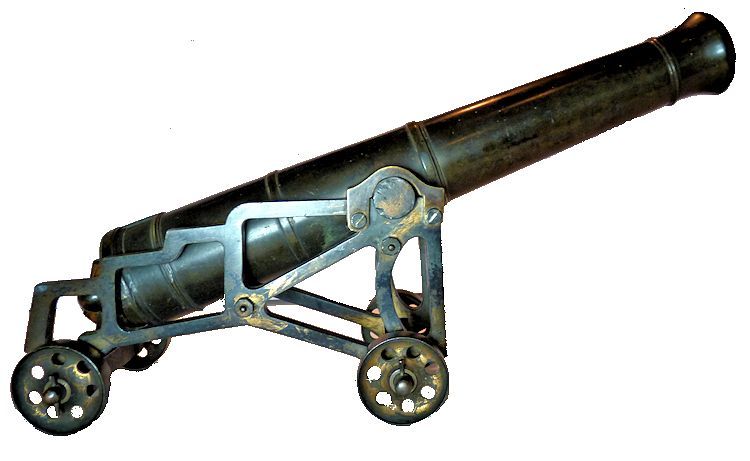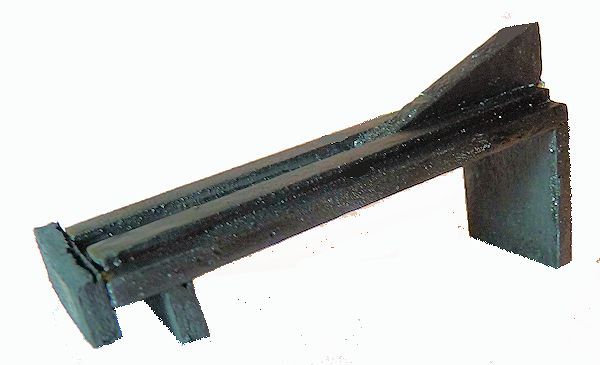

This design is one of the rarest seen in a small size model of a bronze cannon.
It replicates a Royal Navy cannon of the 19th Century with a skeleton iron carriage. High quality antique models of ship’s cannons are scarce, but one with a skeleton carriage is scarcer still. This one likely dates dates from the early 19th Century.

Drawing credit Harold L. Peterson, “Round Shot and Rammers”, Copyright 1969
Presented is a finely made, miniature of a Royal Navy ship’s bronze
cannon on a skeleton carriage. It is similar to the one in the drawing which shows a casement gun of English pattern. The skeleton carriage was originally introduced by the British during the 19th Century as a means of eliminating the deterioration of wood due to the severe elements at sea. The barrel on this gun is decidedly British and follows the design of a traditional naval gun. This miniature likely dates to the time these guns were in use. The barrel’s touch hole is clear to the bore. The precision in which this model is made suggests it is the work of a foundry. The bore is clear to the vent hole.


CONSTRUCTION:The two sides of the carriage are cast brass 5/8 inch
thick and 9 7/8 inches long and 4 3/4 inches high at the maximum. There are no casting or lathe marks on the barrel so it was likely cast using the “Lost Wax” method. The trunnions are below the centerline of the tube and help date
it. Their caps are screwed to the side of the frame.

DIMENSIONS:
Cannon Length overall 14 3/4″
Length barrel 13″ Bore .692″ or .69 Cal
Maximum Width 4 1/2″
Weight of cannon 9 lbs. 15 oz.
Carriage 4 1/2″ W x 8 1/4″ L x 4 3/8″ H
Wheels 1.79″ Dia 45.42mm

ELEVATION:
The height of the barrel is adjusted by a recently fabricated wood wedge at the rear of the carriage that is mounted on a platform that slides forward and backward to adjust the barrel’s elevation. The adjustment platform is removed in the picture above and shows the tube at full elevation.


Pictured above is the recently fabricated black painted wood elevation ramp
consisting of a wedge that moves forward and backwards to elevate or depress the barrel.
CONDITION: Very good with the normal evidence of handling and minor scuffing on the left side just forward of the 4th reinforcing ring.The patina is a rich dark midnight black with some areas of dark green which is very pleasing to the eye. Neither the carriage or the tube show any signs of being fired. The bore is open to the touch hole. There are no mold marks or inscriptions.
This exceedingly unique example is being sold for display purposes only. No attempt should be made to fire it without inspection and certification by a gunsmith.
>
The skeleton bronze cannon on iron carriage dated 1840 as pictured above was made by J.J. Wolfe, a British foundry. It was sold by us in 2007 for $7500.00.
